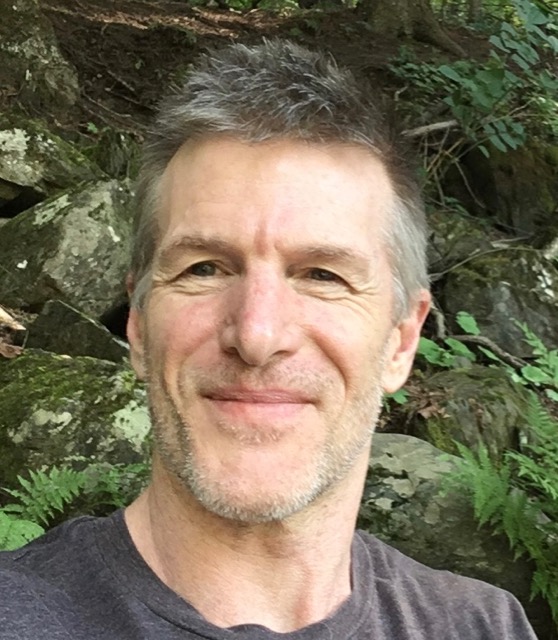Rolfing
Restoring Balance Provides Relief
from Lower Back Pain
What is Rolfing?
Rolfing, also known as Structural Integration, is a hands-on method
of lengthening and reorganizing the myofascial layers of the body’s soft
tissue in order to 1) restore the body to a more balanced relationship
with gravity; 2) restore freedom of movement; and 3) relieve chronic
stress and pain in the body by virtue of accomplishing numbers 1 &
2.
This method of bodywork derives its name from its
creator, Dr. Ida P. Rolf. She received her Ph.D. in biochemistry from
the College of Physicians and Surgeons of Columbia University in 1920,
then spent many years researching the body’s myofascial system.
Throughout her life she explored many forms of alternative healing
including homeopathy, osteopathy, chiropractic and yoga. Dr. Rolf
observed that proper alignment, physiologic function and anatomical
structure are intimately connected, and that the functional relationship among the bodies systems formed the basis of many of these healing methods.
Dr. Rolf found that the body functions best when it is in proper alignment, and that this required a closer look at the effects of gravity
on our bodies. She believed that the imbalances in structure placed
intense gravitational demands on the body's pervasive network of soft
tissues: muscles, fascia, tendons and ligaments, thereby creating compensations throughout the body structure.
Research has demonstrated that deep tissue bodywork creates a more efficient use of the muscles, allows the body to conserve energy, and creates more economical and refined patterns of movement. Research also shows that Rolfing significantly reduces chronic stress in the body structure. For example, one study showed that Rolfing both markedly reduced the spinal curvature of subjects with lordosis (sway back), and also enhanced neurological functioning.
Does Rolfing differ from massage?
A common misconception about this type of bodywork is that it is nothing more than a
type of very deep massage. There are many varieties of massage which
are effective for relieving muscular tension, reducing stress,
detoxifying the body and producing an increased feeling of relaxation
and well-being. While Dr. Rolf's style of therapy also produces these benefits, her work distinguishes itself by restoring physical balance in the
field of gravity. Ray McCall, an Advanced Rolfer in Boulder and former
student of Dr. Rolf, elegantly sums up what Rolfers do with three words:
• Palpation
• Discrimination
• Integration
The Rolfer palpates,
or touches the tissue, feeling for imbalances in tissue texture,
quality and temperature to determine where the work is needed. Then the
Rolfer discriminates, or separates adhered fascial layers and
muscles that have been pulled out of alignment by strain or injury.
Finally, the Rolfer integrates the body, relating its segments in an improved relationship, establishing physical balance in the gravitational field.
While
other forms of massage and bodywork may be quite good at palpation and
discrimination, they do not necessarily balance the body in gravity. Dr.
Rolf was known to say: "Anyone can take a body apart, very few know how
to put it back together." The true genius of her method is the art and
science of reshaping and reorganizing human structure according to
clearly defined principles in a systematic and consistent manner.
Does Rolfing hurt?
The term Rolfing has, for many people, become synonymous with
physical discomfort. The perception of Rolfing as painful is based, in
part, on anecdotal accounts of sessions during Rolfing's earliest years,
when it tended to be a less subtle and more intense discipline. Dr.
Rolf was known to admonish students during her trainings that they were
not working deeply enough. Many assumed that meant they needed to work
harder, with more physical effort. However, what Dr. Rolf actually
wanted from her students was for them to be more specific. Current
Rolfing training standards emphasize this distinction with
ever-increasing clarity.
Another contributing factor to this therapy's reputation as painful derives from the confusion caused by the
popular “no pain, no gain” slogan. A less skilled Rolfer may be seduced
by this sports training catchphrase, and may push their clients beyond
appropriate limits. In some cases, it may be the client themselves who
contributes to the confusion by hiding their discomfort, persuaded that
“if it hurts, if must be good for me.” In neither instance is a
therapeutic process being engaged because the body will defend against
the discomfort.
The bottom line is that Rolfing, or any type of bodywork, should remain within tolerable comfort limits for the client. If it doesn’t, then it’s recommended to seek out a more skilled practitioner.
What occurs during a Rolfing series?
When Dr. Rolf began developing her work in the 1960s, she taught students a sequence of ten sessions, each of which focused on a specific region of the body and had detailed structural goals. Since then, this sequence has been frequently revised. Today, the 10 hour-length sessions are divided into three discreet units.
Unit 1
The first
three sessions are devoted to loosening and balancing the surface
layers of connective tissue. In Dr. Rolf's view, it’s not appropriate to
work deep in the tissue unless the stress you release has somewhere to
go. If the first three hours have been performed successfully, the
deeper work can be translated through the surface and integrated more
completely.
Unit 2
The next four sessions are referred
to as the core sessions. The core is a conceptual space deep in the
center of the body. The core sessions begin with a session focused on a
conceptual line from the inner arch of the foot to the deep adductor
tendons that attach into the pelvic floor. The next part of the core is
the abdomen, and focuses on balancing the superficial and deep abdominal
muscles. Fascial restrictions in and around the viscera (vital organs)
are normally addressed as well. The last part of the core sessions
include the deep structures of the hips and the spine, as well as work
up to the head and neck.
Unit 3
The last three
sessions are devoted to integration. This is where the Rolfer ties
previous sessions together, working in the middle layers of connective
tissue. A variety of creative techniques are used including movement
sessions, subtle body cueing (a type of education and awareness through
movement), subtle middle layer integrative techniques, and joint
mobilization.
In each session, Rolfers seek to impart insights and to increase awareness and understanding, empowering their clients to take charge of their own physical and emotional health.
Return to Lower Back Pain Treatment page
Go to Lower Back Pain Answers
Home page

|
CURRENT COURSES POSTURAL BLUEPRINT FOR CORRECTING PELVIC TORSION: The Complete Guide To Restoring Pelvic Balance (2022) STRETCHING BLUEPRINT FOR PAIN RELIEF & BETTER FLEXIBILITY: The Complete Guide to Pain-Free Muscles Using Active Isolated Stretching (2020) HEALING THE HIDDEN ROOT OF PAIN: Self-Treatment for Iliopsoas Syndrome (2013) FREE MINI COURSE: Introduction to Active Isolated Stretching |

